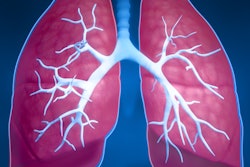Dear AuntMinnie Member,
In the debate over breast cancer screening, the impact of early detection versus treatment in reducing breast cancer mortality has become a hot button issue. Skeptics of screening claim that the reduction in deaths from breast cancer is entirely due to treatment, while mammography's defenders point to the benefit of early detection in finding cancers when they can be treated more effectively.
Turns out that both screening and treatment have played a role in reducing deaths from breast cancer, according to a study released today in the Journal of the American Medical Association. Researchers from multiple centers ran a series of statistical models to determine the effect of screening and treatment, then analyzed the relative contributions of each.
They found that while both factors have contributed to mortality reduction, the effect of treatment has grown over time with the arrival of new therapeutic agents. Learn more by clicking here, or visit our Women's Imaging Community at women.auntminnie.com.
Less CT is more for PE
Turns out that less is more when it comes to CT pulmonary angiography (CTPA) exams to detect pulmonary embolism (PE). Researchers from Canada found that doctors who ordered fewer CTPA exams actually had a higher rate for successfully detecting PE -- and those who ordered the most scans had the lowest diagnostic yield. Read all about it by clicking here.
In another article in our CT Community, noted breast screening skeptic Dr. Gilbert Welch has turned his attention to CT, more specifically to the relationship between CT scans and kidney surgeries. Dr. Welch led a team that found that the more CT scans were performed in a region, the higher the rate of kidney surgeries, which he believes is a sign that CT is leading to incidental detection and surgical intervention. Get the rest of the story by clicking here, or visit our CT Community at ct.auntminnie.com.
US for golfer's elbow
Finally, be sure to visit our Ultrasound Community for a new article on the use of ultrasound elastography to detect medial epicondylitis, or golfer's elbow. Find out which sonoelastography factors are the best predictors of the condition by clicking here, or visit the community at ultrasound.auntminnie.com.




















